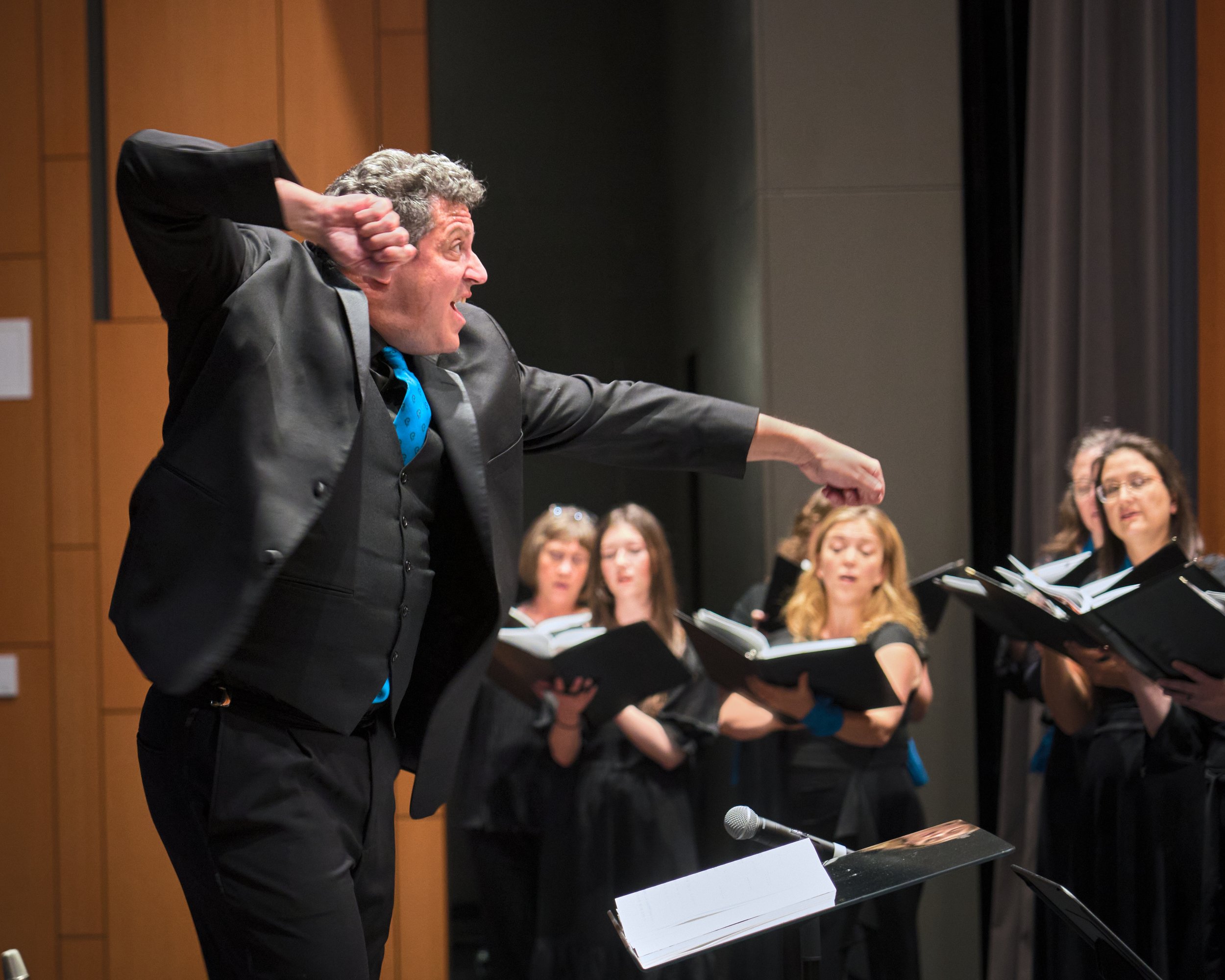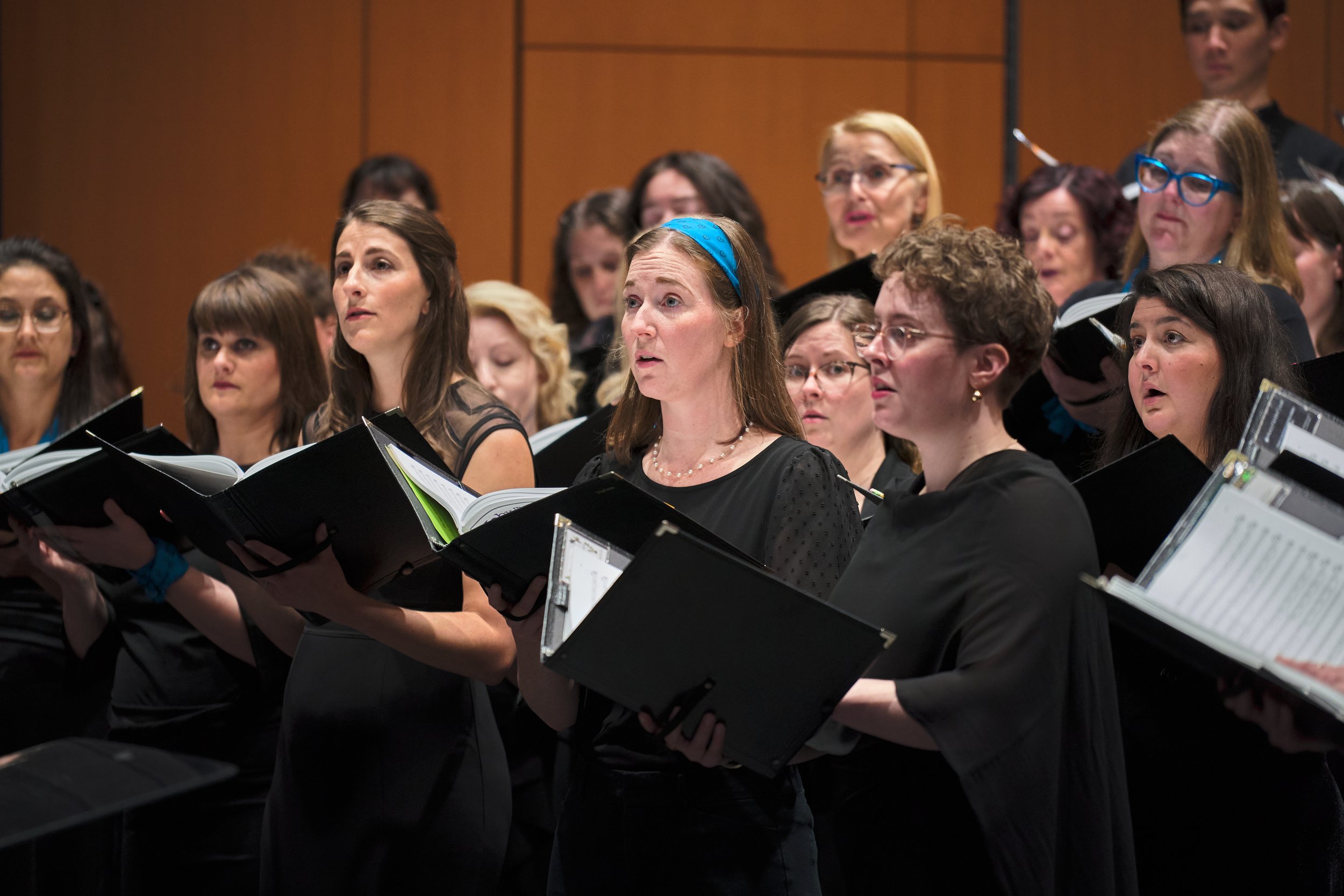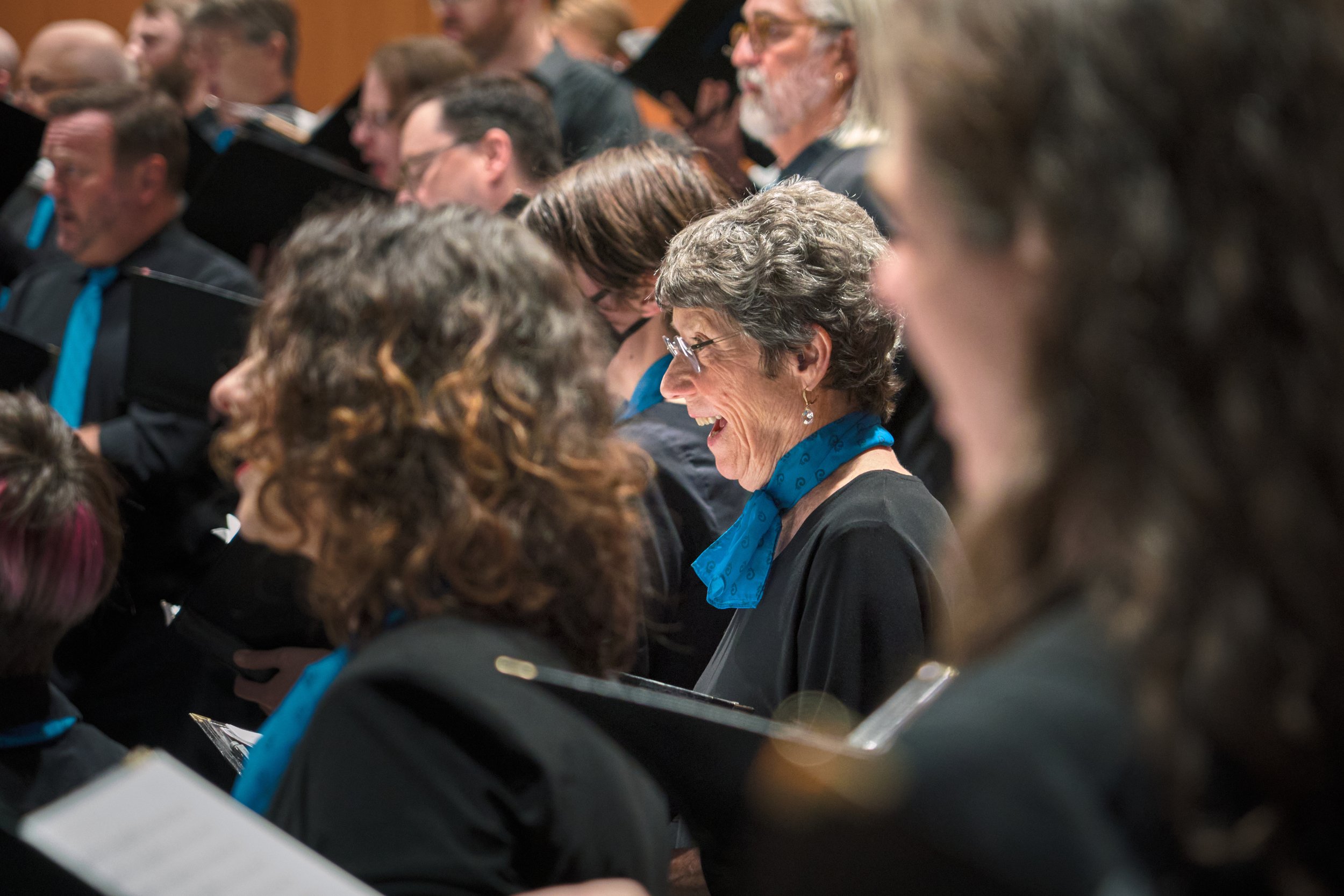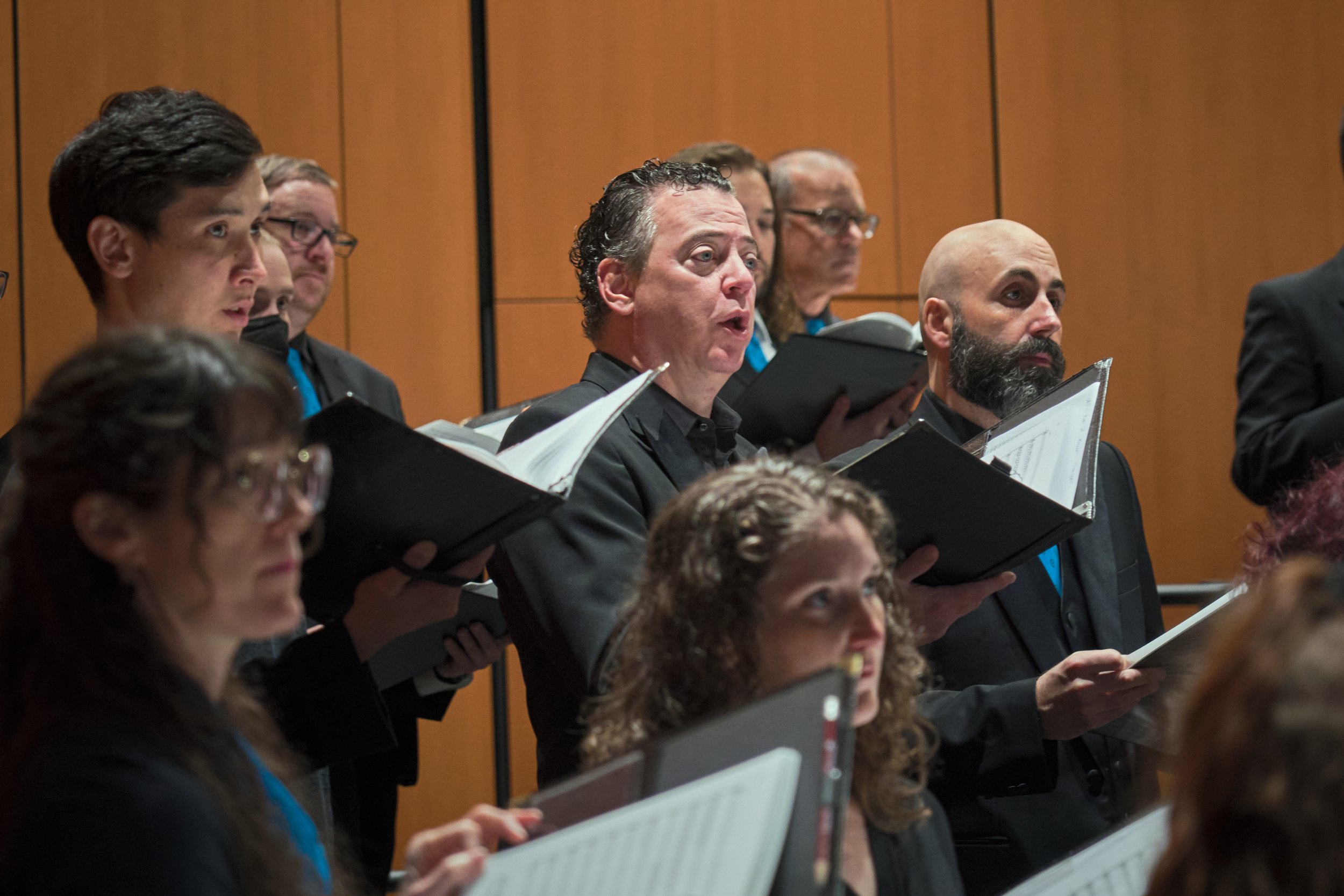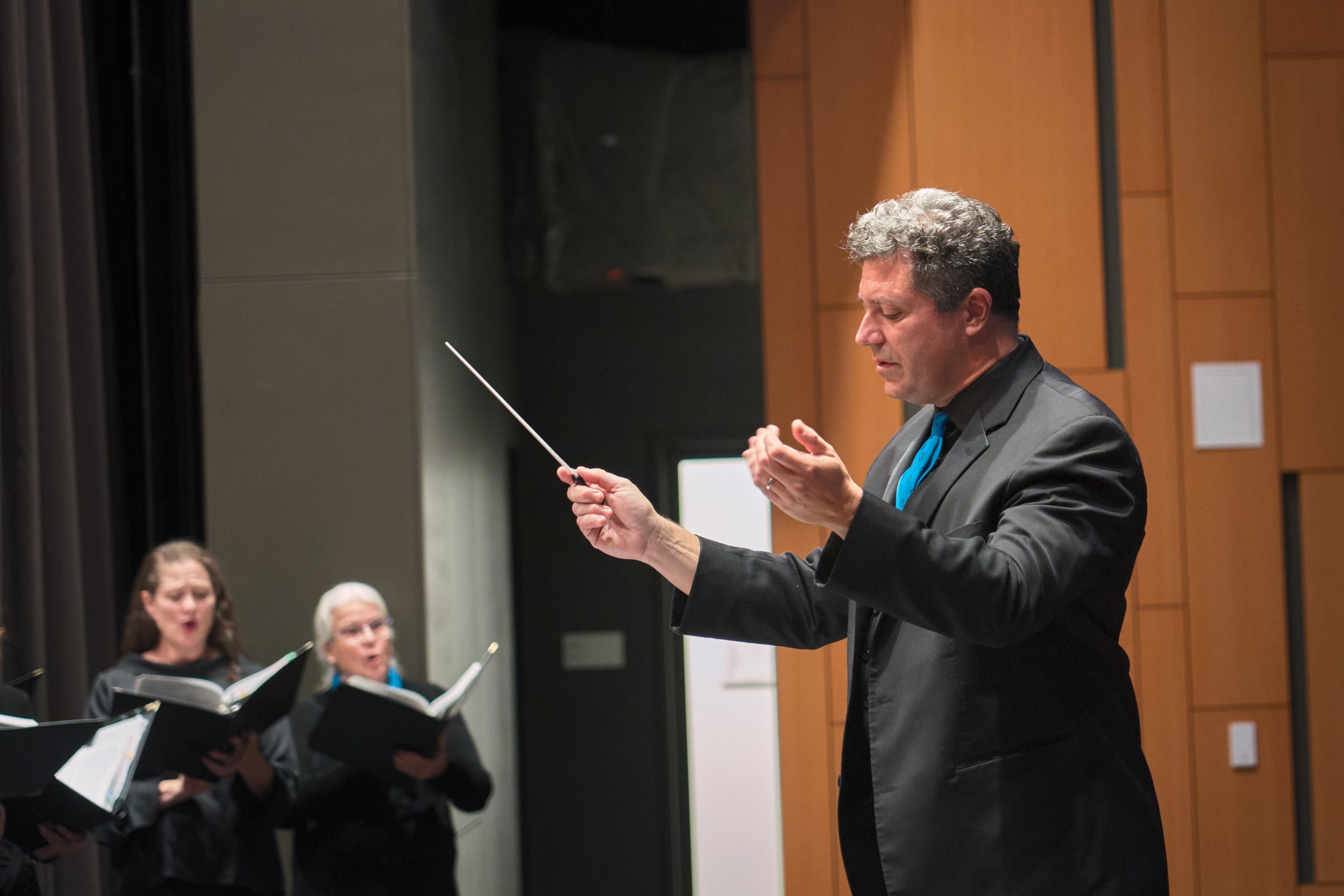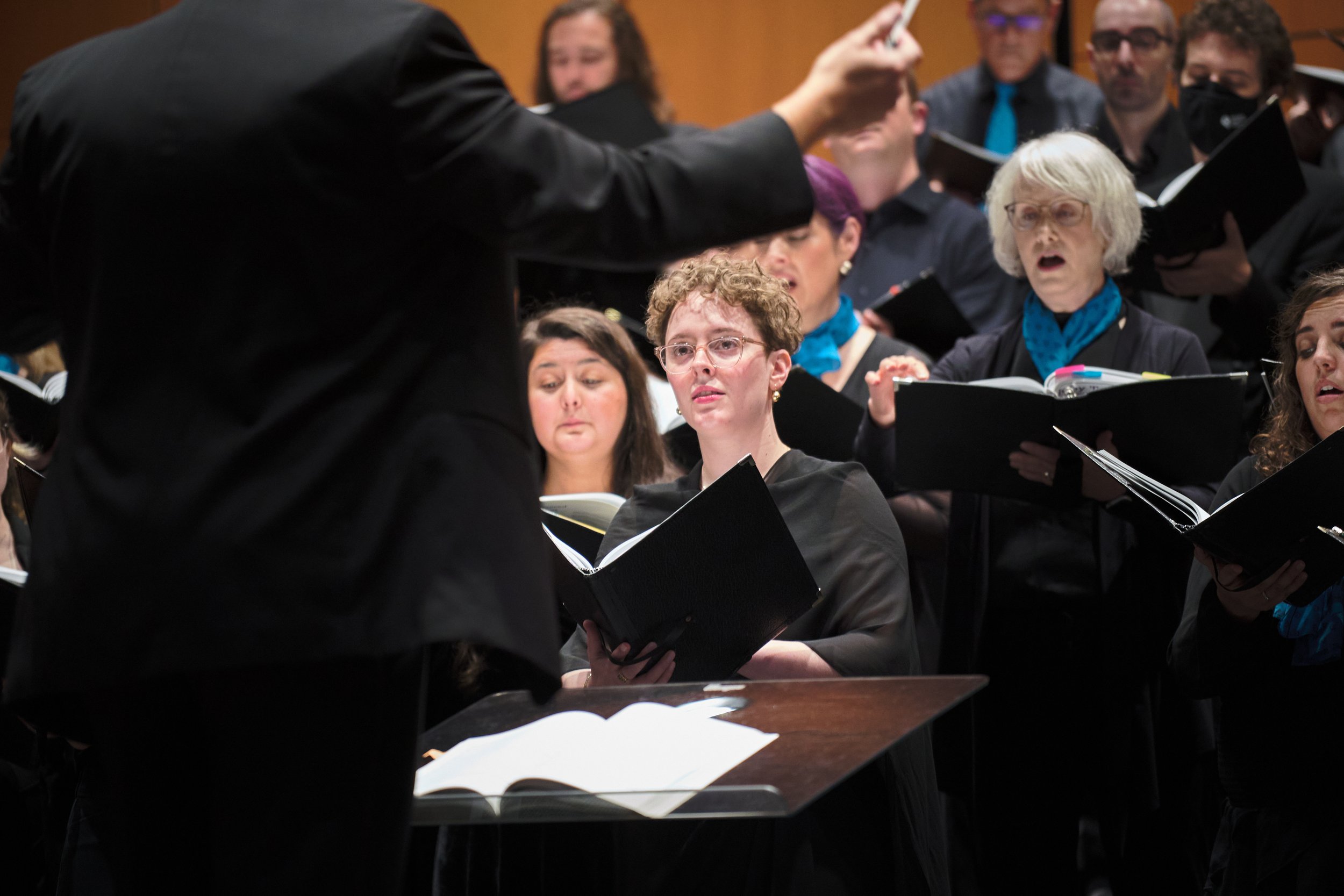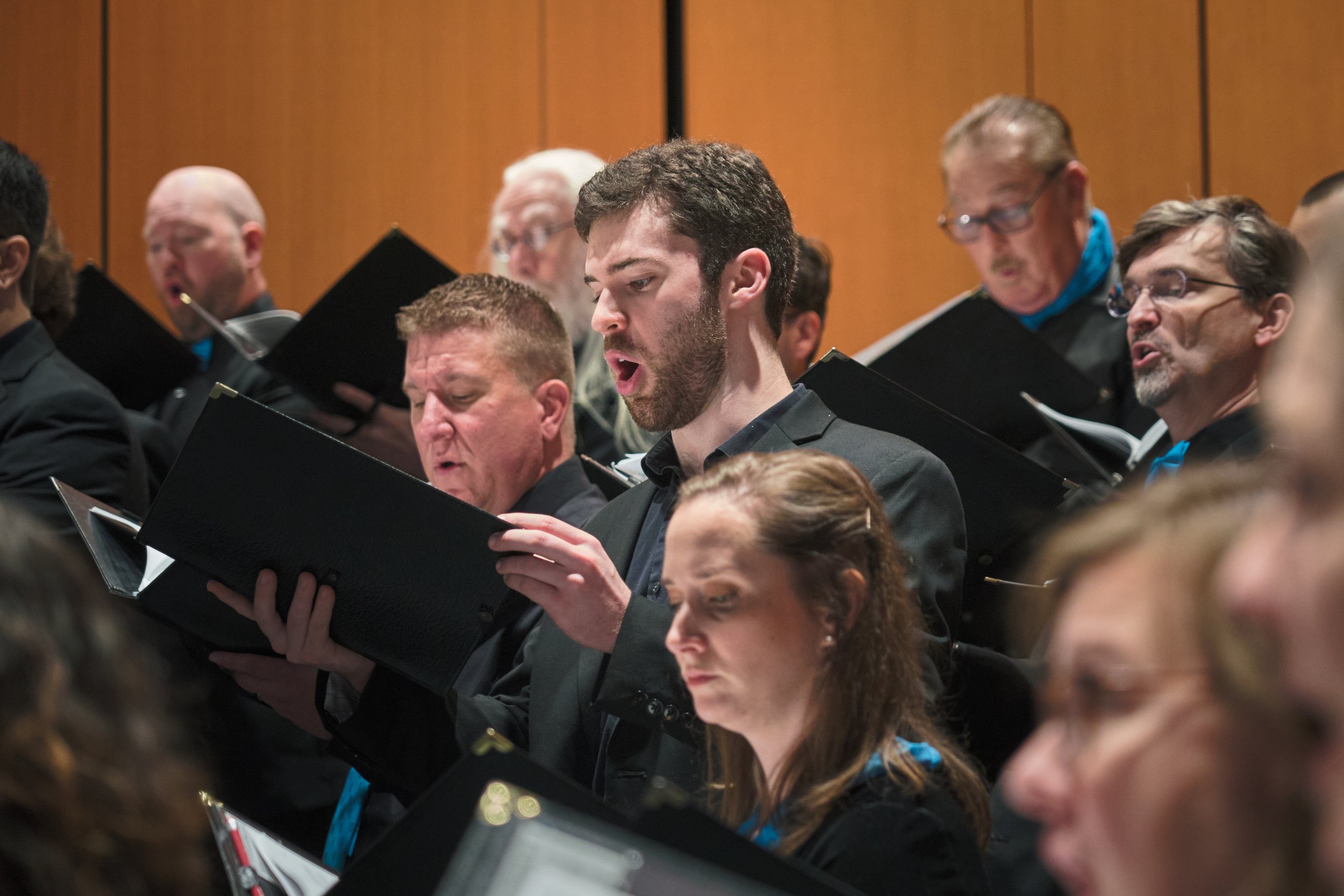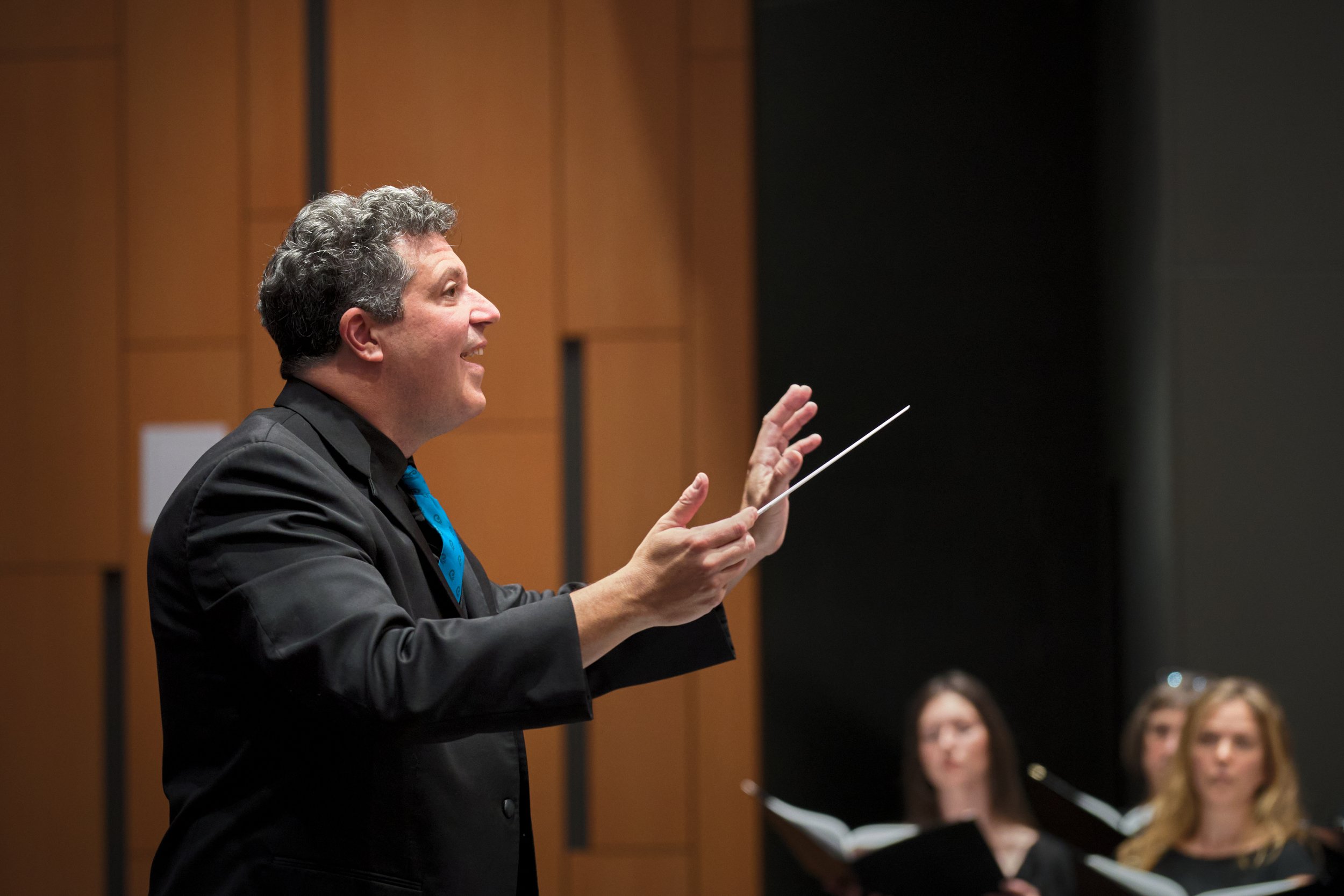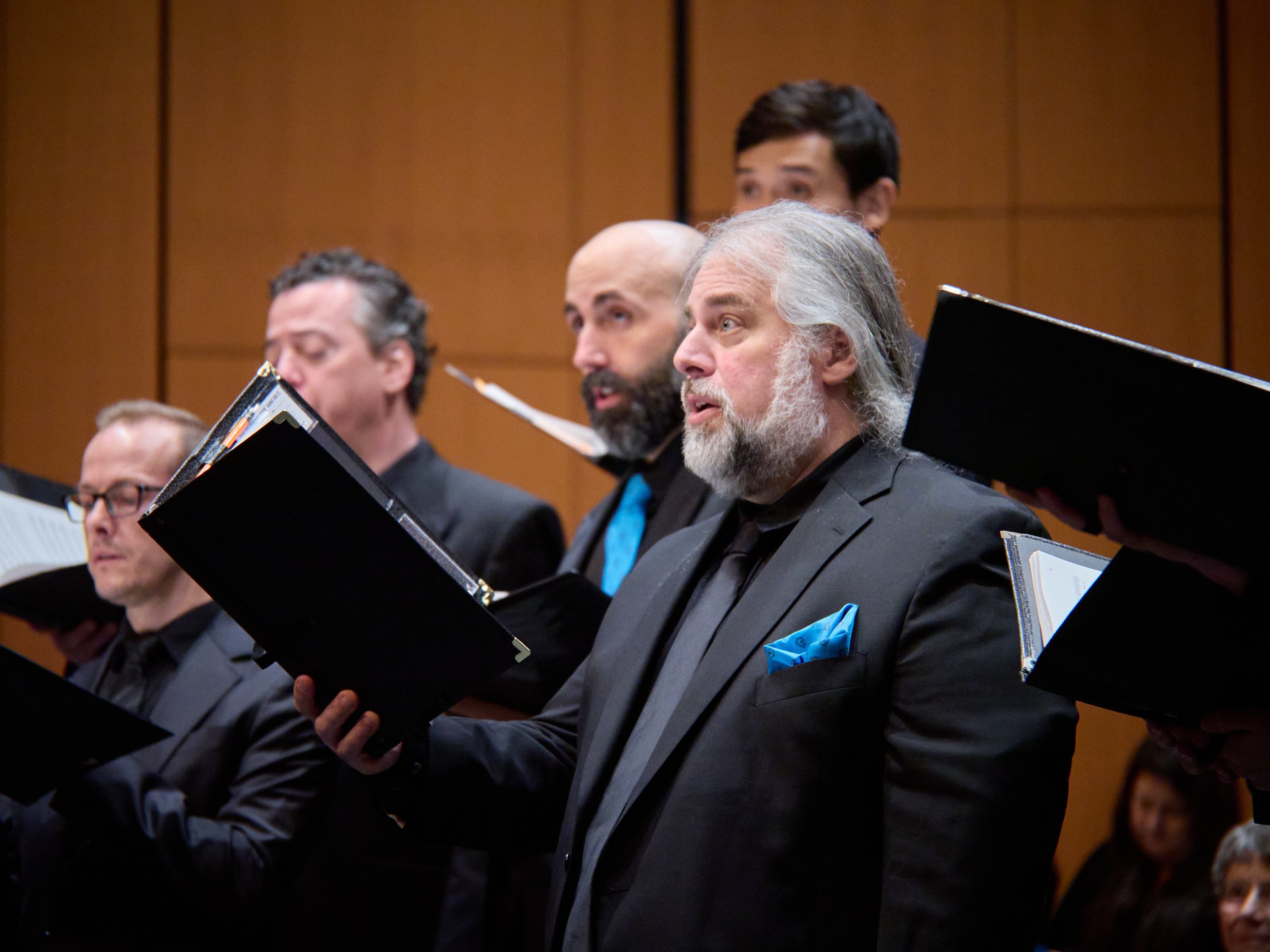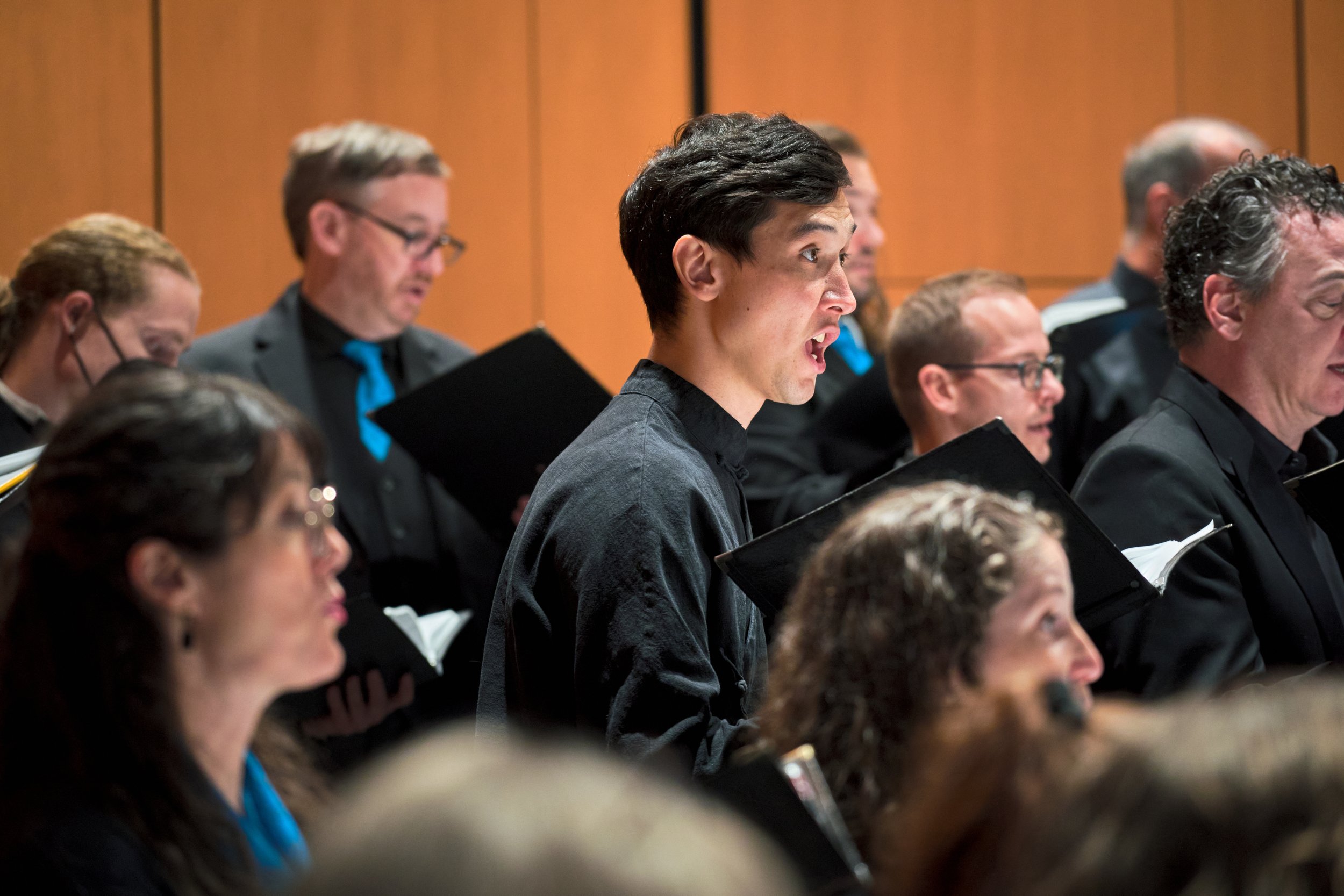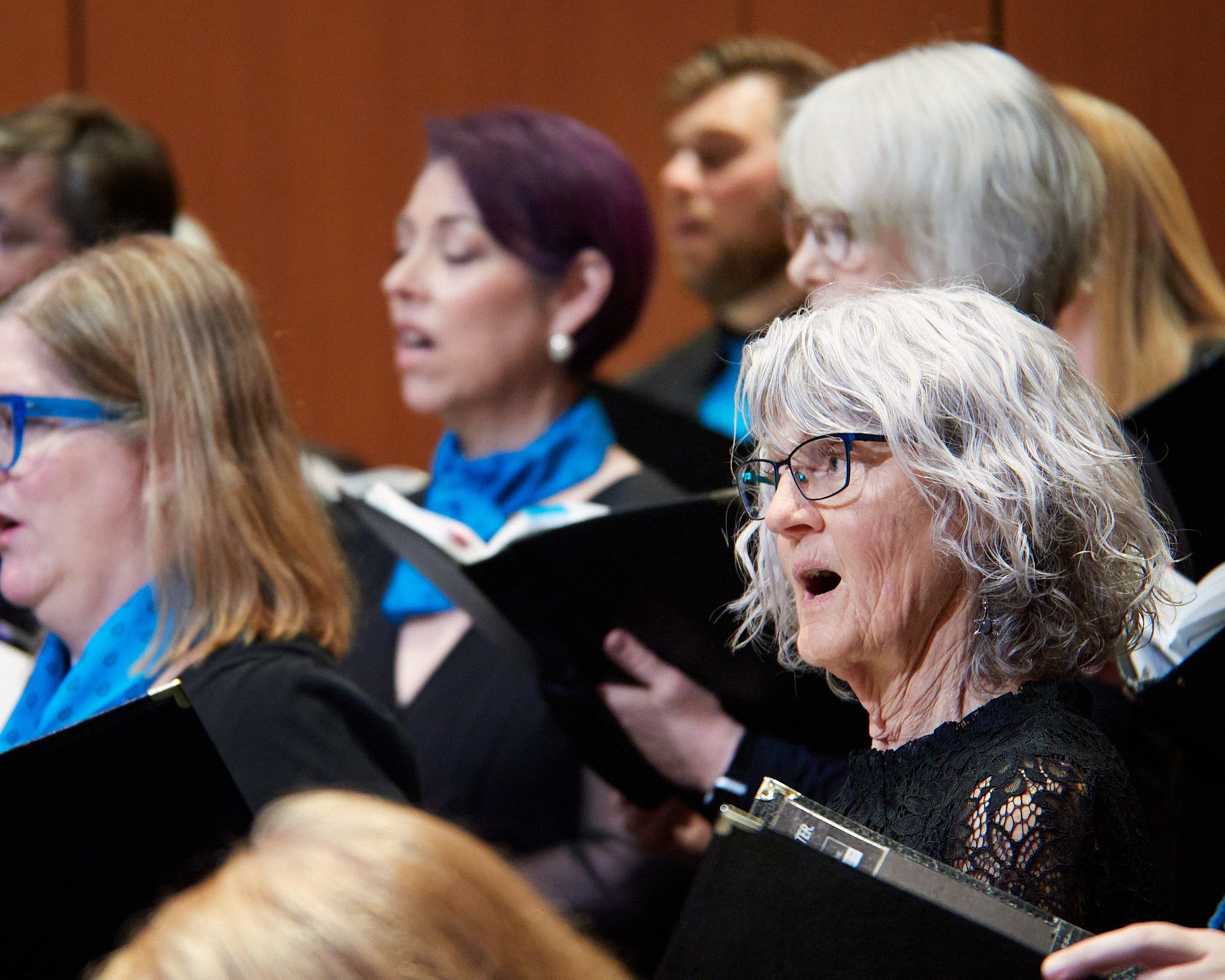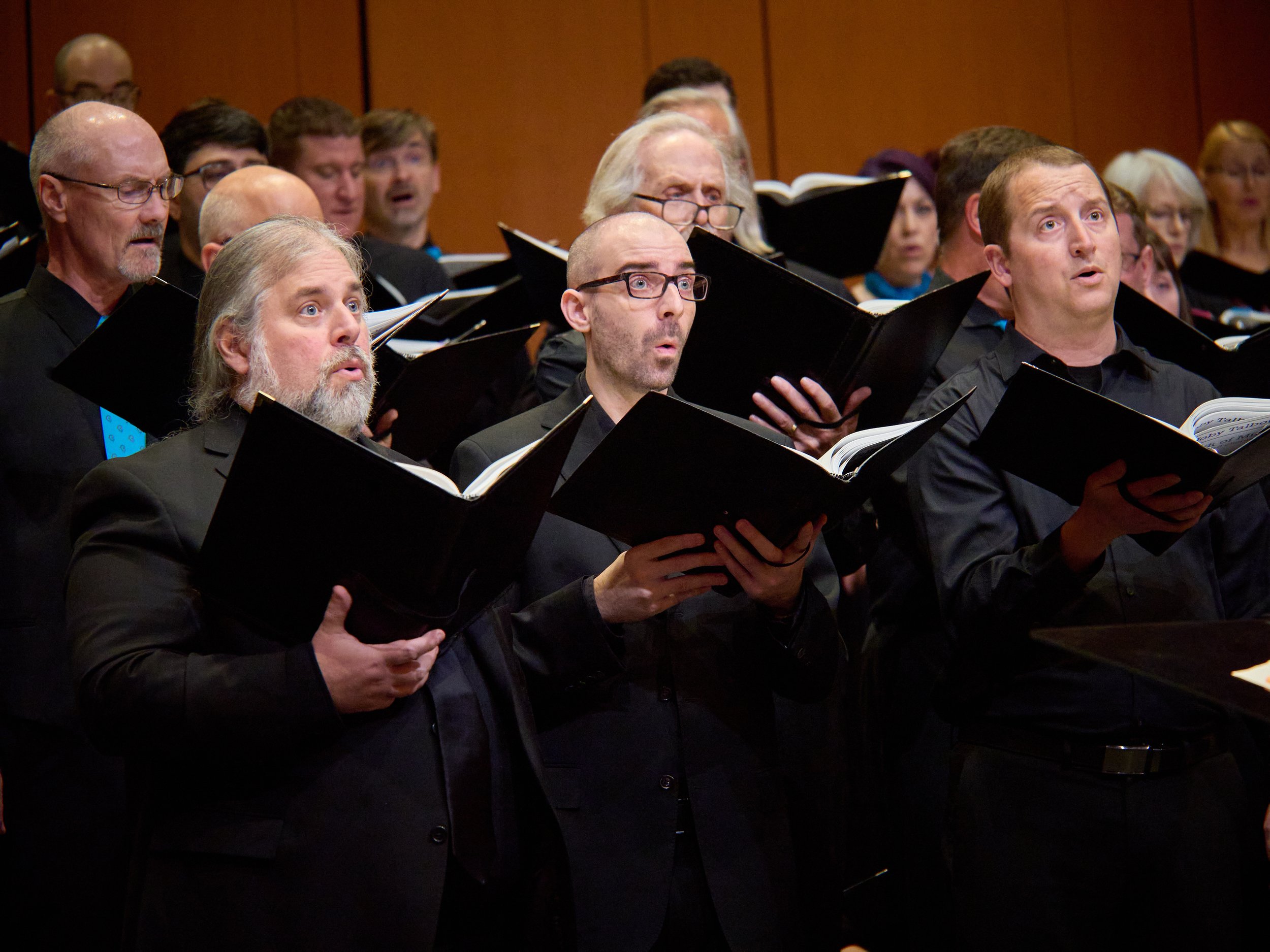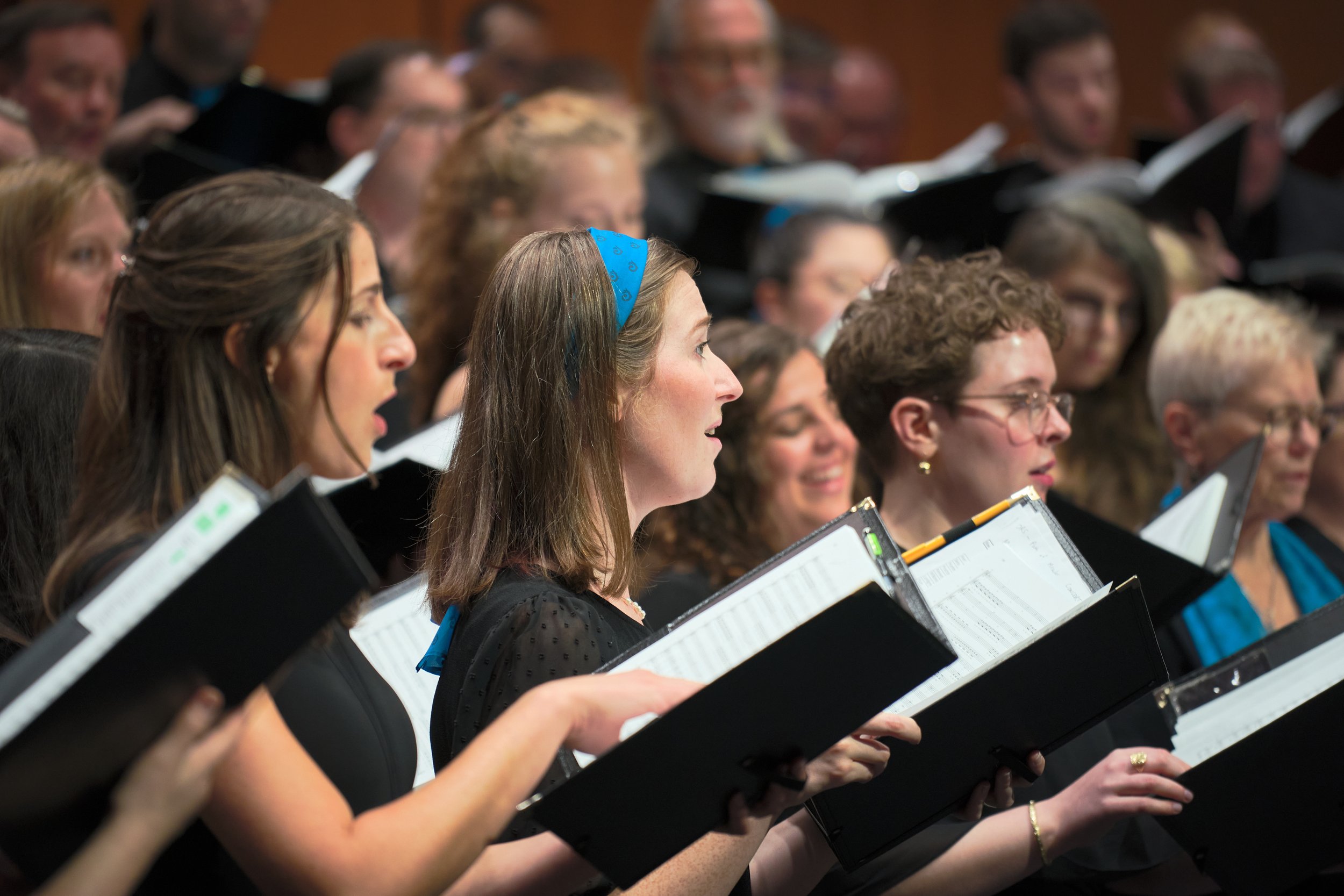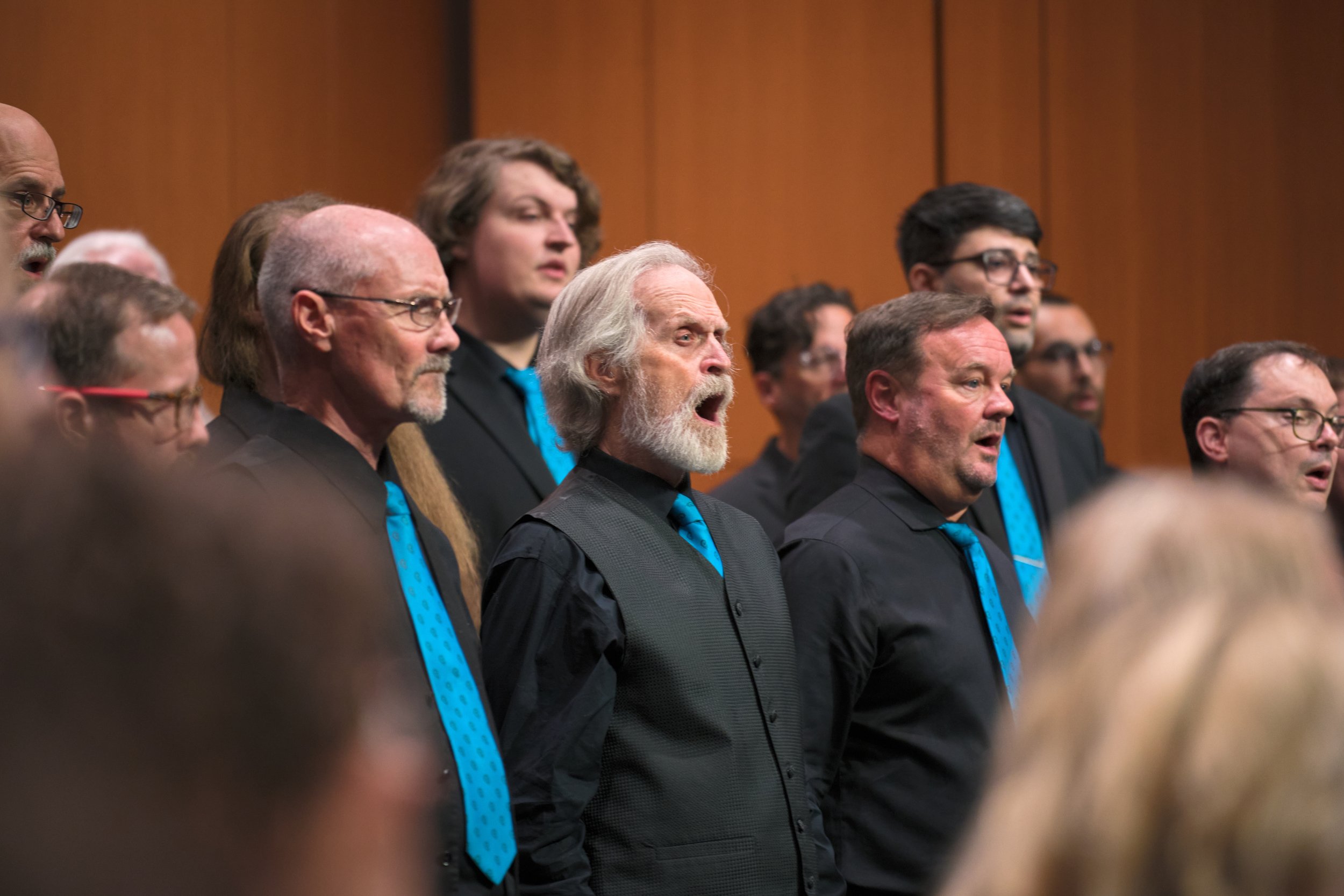
An acoustic ideal of humans in harmony.
– Lowry Yankwich

Review by Lowry Yankwich
There is something immediately warming about choral music: the sound of a hundred-plus voices, reaching toward the same musical goal; the slight whisper of breaths, and sibilant “s’s” that remind us that music is (still sometimes) produced by humans. When executed well, as here, the music offers a balm to the frazzled listener, an acoustic ideal of humans in harmony.
In honor of its 50th anniversary, the Oregon Repertory Singers, a premier civic ensemble based in Portland, Oregon, presents a collection of nine of the group’s favorite pieces. Anyone who has ever been a member of a choir will likely know some of them—selections like Biebl’s richly-harmonized Ave Maria or Whitacre’s Sainte-Chapelle, which shimmers through dissonant suspensions and cluster chords.
More interesting are pieces with personal origins. The group’s accompanist, Naomi LaViolette, is also a seasoned arranger, composer, and performer in her own right. Two of her compositions and one arrangement of a medieval carol are featured on the record. Winter Solstice in particular demonstrates LaViolette’s mastery of choral writing, using beautiful suspended chords and ethereal high pedal notes in the female voices to evoke a ruminative atmosphere. Morten Lauridsen, a hometown choral success story who has collaborated frequently with the group over the years, also receives a nod with a performance of his piece Dirait-On.
Stacey Philipps, another of the chorus’s members, offers a work too. Close Distancing, a work borne from the experience of the pandemic, features a meditation on nine words: “I see you / I hear you / I miss you.” The piece captures the paradox of its title with harmonies that wobble between cold minor sounds and warmer clusters of notes, like friends huddling for comfort.
The largest piece on the album is Ola Gjeilo’s Sunrise Mass in four movements. The piece serves as the conclusion to the album, and is a live performance in collaboration with the Union High School Chamber Orchestra. Don’t let the age of the musicians fool you—their performance can be restrained when it needs to be (movement four), and ebullient at other times (movement two).
Overall, I was impressed with the execution and quality of the record. The audio engineering is of professional quality, which largely means keeping the sound natural but enhancing the warmth and resonance of the chorus. There were no noticeable split ends or awkward artifacts. The singing itself was precise, from notes to vowels, with crisp entrances and cut-offs, and facile shifts from quiet, shallow singing to full-throated declaration.
If I were to quibble with the record, it would be more with the choice of repertoire than the singing or musicianship. A problem that often plagues choruses, including choruses of which I’ve been a part, is that choral music can start to wash together. Without more variation in instrumentation than chorus and piano, it can be difficult really to change textures. Many of the pieces on the album were gorgeous, even serene, but it would have been nice to hear something more spunky, rhythmic, or from a different cultural context, for the sake of diversity.
